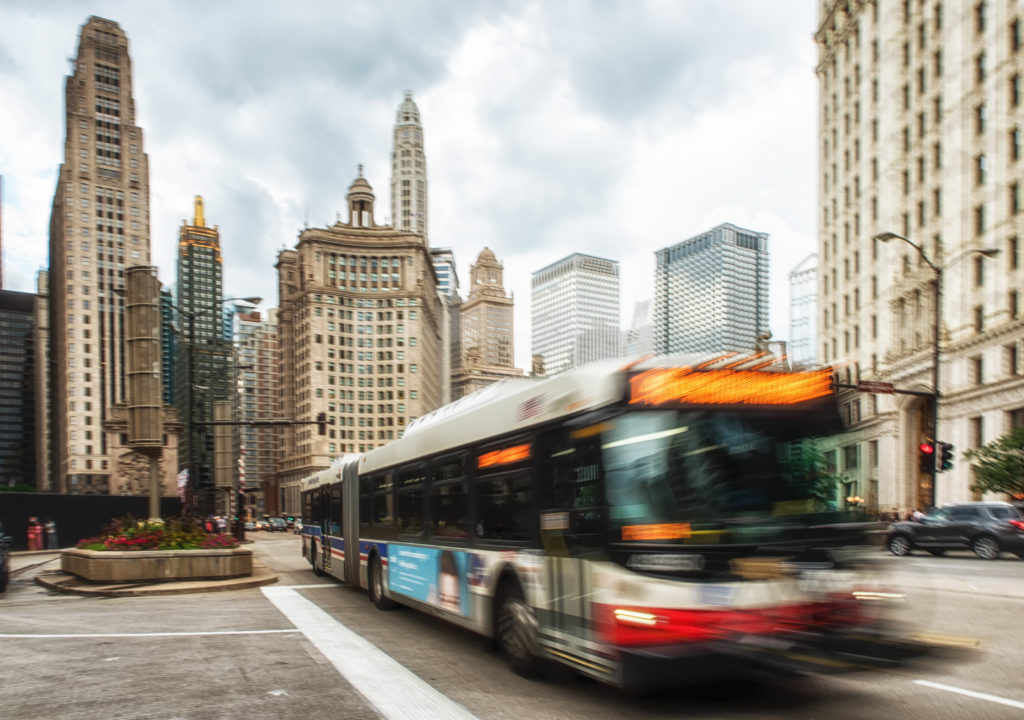
On October 18th, City officials announced two new initiatives to reduce downtown congestion and increase the use of Chicago’s bus system. Through the new initiatives, Mayor Lori Lightfoot announced that ride-share apps will see an increase in fees, specifically downtown and in the surrounding areas. Additionally, Lightfoot announced the city would be adding additional bus-only lanes throughout the city to incentivize public transportation.
Both of the announcements follow what has been a long-awaited response by Chicago’s administration to curb the significant increase in ridesharing occurring throughout the city, which has clearly had a negative effect on the use of public transportation for downtown commuters. After the announcement, Curbed Chicago provided a breakdown of how Uber and Lyft users would be affected by the new initiative. For starters, “the new proposal would decrease the amount for shared trips to 65 cents and increase single rides to $1.25.” In doing this, the city is hoping to clearly incentivize riders to think about carpooling. However, this isn’t nearly as aggressive as Chicago’s special downtown zone fee, which will see the single trip fee increase $2.28 to $3.00. Curbed Chicago goes on to explain that “the downtown zone fees would apply between 6 a.m. and 10 p.m. and the proposed downtown area includes the Loop, River North and a portion of the West Loop. The boundary streets include: Lake Shore Drive, Roosevelt Road, Desplaines Street, Van Buren Street, Ashland Avenue, Grand Street, North Branch Canal, North Avenue.”
Overall, these are drastic announcements by the city. No matter the public policy at hand, commuters are likely to not take too lightly to a two dollar increase in taxes and fees for every ride they try and catch in the downtown area. For many, especially those living in nearby neighborhoods, there is going to be dissatisfaction. With that being said, we can only hope that such a decision will bring positive results not only for traffic congestion, but for rider and pedestrian safety as well. As we have written countless times, traffic congestion brings unwarranted dangers to those in the city. For example, it was announced in the 2019 Urban Mobility Report that Chicago commuters lost a total of $1,307 annually due to traffic congestion, which was the result of vehicle damage, wasted gasoline, and many other factors associated with increases in traffic. More shocking, according to TRIP, the National Transportation Research Nonprofit, traffic congestion studied as recently as 2016 showed that the trucking industry lost a total of $74.5 billion due to the operational costs associated with traffic. All of this establishes that while it may appear absurd and a downright overreach to drastically increase taxes and fees associated with ridesharing in Chicago, there is far more at play then giving the city money for failing to take public transportation. We should hope that driver safety and vehicle costs are one of those primary factors.
Chicago’s New Bus Initiative
Along with the new fees for ridesharing comes an initiative to revamp and give an incentive to the public in taking the bus system. “The Bus Priority Zone Program will bring bus-only lanes, queue jump signals, and better traffic light timing to some of Chicago’s highest ridership routes,” writes Curbed Chicago. As a result of the $20 million dollar plan, the goal is to remove “slow zones, bottlenecks, delays, and bunched up buses that come one right after the other.”
Curbed Chicago also had the opportunity to speak with the Executive Director of Active Transportation Alliance, an organization that advocates for providing safe walking, bicycling, and public transit options in communities. Executive Director Melody Geraci stated that “transportation is the great but invisible connector between people and opportunity. We don’t think about it as much as we think about affordable housing, or access to grocery stores and jobs but all of those things are only connected if we have a great transportation system.” Geraci went on to state that since 2008, Chicago had also seen its bus ridership decrease by 28 percent. Ultimately, this goes hand in hand with the issues that traffic congestion brings as well. Commuters do not want to sit in traffic on a bus filled with other people they don’t know. They would much rather be in their own vehicle or be driven, if they have the means to do so. With that being said, the city’s approach to enhance the bus experience throughout the city will certainly bring positive results if done correctly. For starters, we will all be better off with fewer cars on the road. It will not only help with increasing the air quality in downtown, but it was increase traffic safety. For us, that is the most critical aspect of this new plan. If the city initiates these proposals and traffic does decrease as a result, we should see that as a huge win for Chicago. The better chance of keeping vehicles and drivers off the road, the better position drivers are to get to their destination safely.
Reader Interactions